Just for fun: Rolleiflex Hy6 using film vs The Sigma DP Quattro
To those who have shot or do shoot Medium Format film or digital, you know the differences between those files and your run of the mill full frame of APS-C files. With Medium Format film or digital you get an amazing depth, richness and tangible quality to the files and photos whether that is in print or on screen.
Many times people will say that the Sigma DP series has a “Medium Format” quality but that can be a little misleading. For example, the latest and greatest Sigma DP Quattro was recently in my hands for 3 weeks to review. I reviewed it HERE and even I mentioned it had a medium format look and feel. But I was going by memory as it has been 4 years since I have shot a Medium Format camera (which I reviewed HERE).
Recently I had the pleasure of shooting with a Rolleiflex Hy6 Mod 2 camera and wow, that was quite the experience. From shooting, to feel, to control, to auto focus to QUALITY, this is the best MF camera I have ever shot with or even handled. It should be for $10k with lens and film back but the Rollei just may be the coolest medium format camera made today. At $10k it comes with a 6X6 film back but you can also add a digital back and have one bad ass setup.
I shot 5 rolls through the Hy6 for my review period and will post that within a week but for now I wanted to show two shots…one from the Rollei Hy6 using Portra 160 film and the 2nd with the Quattro. These are NOT meant to be technical comparison shots, but rather a look at the rendering of each. The Rollei is a low res lab scan and the Sigma is a resized file converted to JPEG. Even so, the depth, the richness and the magical quality is all there in the Medium Format shot and the Sigma appears off in color and lacks the depth and richness that the film shot provides.
The only area where the Sigma is really “medium format like” to me is in sharpness and detail, which it has loads of. But even with that, I prefer the MF shot by far. Take a look below and see for yourself. The MF shot was with an 80mm lens at f/2.8. The Sigma shot was also at 2.8 using the built in lens of the Quattro and shot in 1X1 mode to simulate 6X6. After looking at them side by side it appears digital still has a load of room for improvement in the quiet balance area. Film just nails it it seems. Then again, how long as film been around? Much longer than digital! I did not get a digital back to test with the Rollei but shooting it with film was a treat, even though a pricey one (cost of purchasing 5 rolls plus process and low res scan = $100 for 60 images). The ROllei auto focused FASTER than the Sigma by a little bit.
Click them for larger.
The Rolleiflex Hy6 Mod 2 with the 80mm 2.8 lens and Portra 160 film – low res lab scan. This is best appreciated on a large and well calibrated display. This one has the MF look and soul. Not uber sharp but nice color, great depth and contrast is about perfect.
–
Now the Sigma Quattro at f/2.8 – the color is off (a yellow tinge and there is much more DOF even using the same 2.8 aperture. It looks digital (and it is of course) and more flat but very sharp.

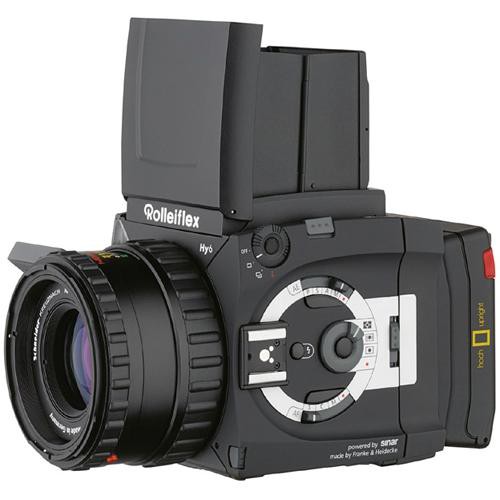
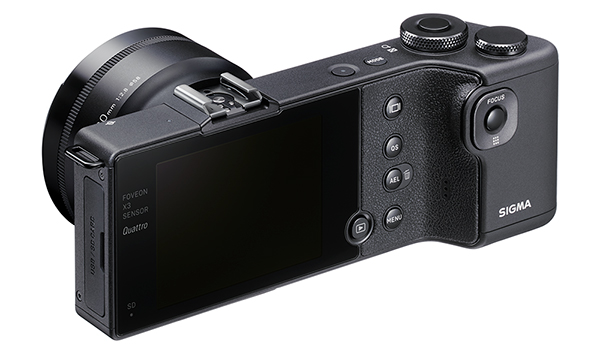
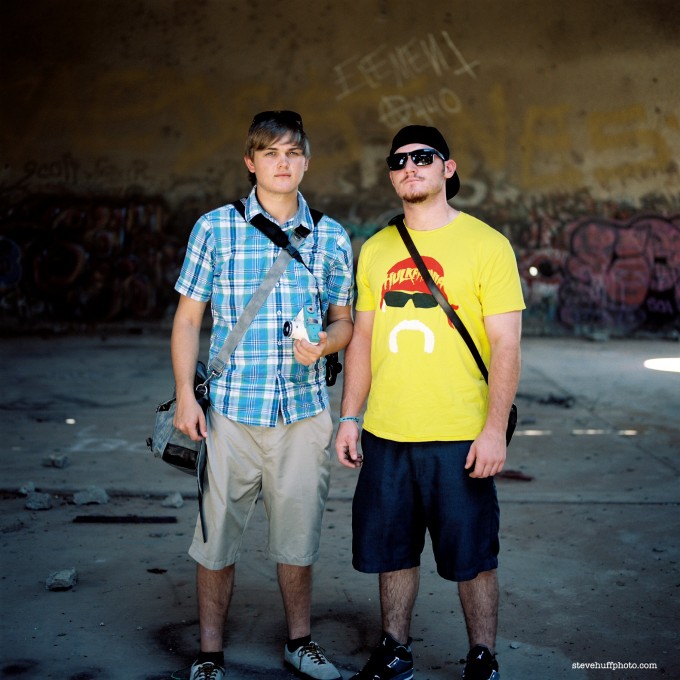
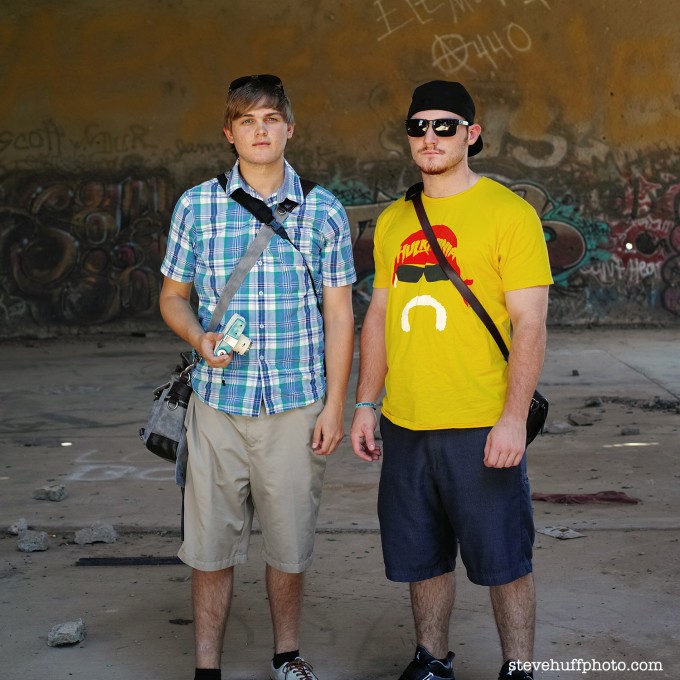

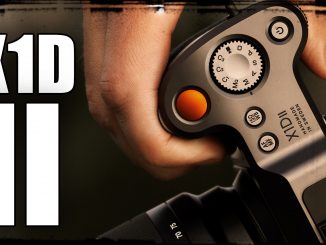

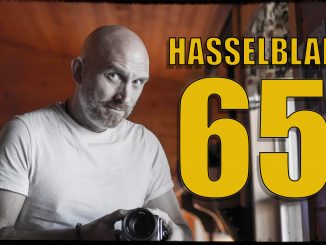
Call me silly, but I’d love to see what a MF sized Merrill sensor could do in a fixed lens body.
In reality, the two images posted here are not comparing analog to digital at all. Both are digital images!
One is the rendering of a file generated by the hardware/software combination of a digital camera capturing a real life event, sauced up by whatever computer programs are required to finalise the posting process, and again sauced up by the hardware/software environment of the viewer (me).
The other is the rendering of a file generated by the hardware/software combination of a scanner digitally interpreting points of a piece of emulsion (rest of process as per above).
This comparison is mainly scanner vs digital camera.
In my experience, most scanners do a lousy job at rendering the full gamut of information available on a film emulsion.
To visualise on a computer screen the full glory of a 6×6 piece of properly exposed film, one must resort to unaffordable scanners and skilled operators. If you want to share your images beyond the viewers of your prints or your solitary enjoyment of a lightable and loupe, MF film is a very cumbersome option.
I still do 35mm film, and can scan that with a good level of quality with my old Coolscan V. And I love that. In particular scans of (recently retired) BW400CN or any of the Fujichromes. I would probably do MF film if something like the Coolscan 9000 was still available.
But at the end of the day, I do know that MF film generates pure magic. The larger the emulsion surface, the more spectacular the magic. Unfortunately not demonstrated on this page. Hopefully, properly scanned images will be shortly inserted into this nice article to do justice to that beautiful medium.
https://www.bhphotovideo.com/c/product/884302-REG/Pacific_Image_primefilm_120pro_PF120_Multiformat_Film_Scanner.html
No doubt the Sigma is a very good camera, but there is absolutely no comparison when it comes to the sheer quality, look and beauty of the photographs of the Rolleiflex photos have completely different and superior quality to them which is impossible to match this side of 6×7.
These are low res lab scans, a full blown scan, or a print or even better – a projected Slide from a fine grained film such as Portra would be way above and beyond and then some.
I meant Provia not Portra.
stating the obvious report
I’m assuming that Steve made is evaluations based on what he saw before posting. I have two Merrills that I think take fantastic pictures and they are my go to cameras. But, sometimes I shoot a few rolls with my Rolleicord and the results, in my opinion, handily beat out the Merrills. Others may not see it that way, all depends on what you are looking for in your images.
Ricoh has the new Pentax 645Z digital medium-format camera using a Sony 51.4MP CMOS sensor. $8.500 for the body.
This is a challenge for sigma, next dp2 should come 45 f1.4 lens with curved FF foveon sensor in Dp2m body. 😀
I’m an ex-Leica Digital guy. Quit digital 2 years ago, since then I learned a lot with film and build a darkroom. Call me crazy, but I like to compare film photography with tantric sex, you take more time and have more pleasure in the end.
The film picture is nice, good contrast, skin tones and color representation. Did you know you can overexposure 5 stops in Portra 400 without loss of color? That’s why there’s more contrast in film photo film can capture better color representation. Did you ever tried to overexposure a cmos sensor and get nice results?
I routinely use Medium format and a reasonable FX DSLR, as well as APS-C cameras. Medium format is much richer, much more nuanced, much more detailed: and much harder to get right.
Quattro is far more Bayer Digital looking than earlier Sigma including Merrill.
SD9, SD10, have the most natural look. DP1, DP2 like slide film.
These early Sigmas had a subtleness which only Medium Format captures.
Setting F6.3 on Medium Fromat to get similar dof of Apsc F2.8.
The Sigma definitely has flatter contrast and less vignetting to it, but is also much sharper and shows a lot more detail, especially in the faces. The freckles on Steve’s son’s face are barely visible in the Portra shot, but are quite clear in the Sigma shot. That of course, is an intentional trait of Portra film, smooth skin tones.
Contrast is much more linear in the digital world than film, so that is to be expected, but can also be adjusted in post. Film does have a very gentle rolloff into highlights and shadows though, that are hard to duplicate with any digital camera.
Film has a depth to the color that I’ve never seen a digital camera able to match. Sigma’s cameras are the only ones that I feel get close to being able to reproduce the subtle variances in color that some pro films can, but with the new Quattro cameras, maybe a little less so.
The “white balance” in Portra film is not “better”, it’s the machine that scan’s the film or makes the prints that is determining white balance, not the film itself. Such is the case with all color negative film, of course chrome film is a different story.
Steve, Portrait Photography 101 note for you here, don’t cut people’s feet off.
I am more than well aware of your “portrait 101” – this was a quick test comparison, not a photo I planned to print or do anything with. If I am getting paid for my work it will be perfect. If I am testing cameras, which I do every single week I am testing other things besides perfect composition. I had 2 hours worth of work to do there in 20 minutes time 🙂 Was not worried about the feet.
Good points. The highlights and shadows rolloff is #1 reason that I still shoot film, and the color is #2. I always wonder what makes these differences. Probably, the color separation and dynamic range of the digital sensor is still far from film.
It has something to do with the chemical nature of film vs the very, very linear nature of digital. If you see a raw output from a digital sensor without a contrast curve applied, it’s very flat looking.
MF film has its place, as an artist, period. That said, neither system replaces one or the other. Considering I have a Canon 6D which renders beautiful and does impressive high iso, I would never need digital MF. I do own a Mamiya RZ67 w film back and 110 2.8, and I’d bet the rz lenses rival the Rollei lenses, for $450. I also recently picked up a mint Mamiya c220f (6×6) w 80 2.8 for $350, the lens can’t compete with either the rz or rollei, but no scrub.
Low res scan doesn’t do justice, and looks like the lab had the sharpening turned on and up which I’m never happy about.
Considering these are both digital files, color, contrast, exposure, all kind of irrelevant.. Photoshop?
interesting. I still shoot a good deal of film, from 35mm up to 4×5. I also have a Sigma DP and a DPxM. Foveon images are often called “film like” but they’re not the same. Increasingly though it’s harder and harder for me to believe that color film is better than my color digital images. B&W, I still prefer film. One thing that’s similar with a film or foveon capture, when looking at a screen full of thumbnails I can pick them out almost instantly from the other “regular” digital images. There is something different and to me pleasing about them.
Thank you for this comparison. I was starting to re romanticize film and now see clearly that for $10,000 + $1.66 a “click” my $700 DPxM was an incredible bargain. I think I’ll sell my scanners and upgrade my printer.
“Thank you for this comparison. I was starting to re romanticize film and now see clearly that for $10,000 + $1.66 a “click” my $700 DPxM was an incredible bargain. I think I’ll sell my scanners and upgrade my printer.”
You don’t need to spend $10K. You can get near identical results with a $500-$1500 (depending on how pretty you want it) Rolleiflex 2.8 or 3.5 TLR. Which in 10 years time will be worth more than you paid for it. It’s almost like you will be paid to take pictures!
😉
Hi Not sure these comparisons make much sense strictly speaking as people seem to be taking them too seriously- as Steve says they are “just for fun “. Have not been following these Medium Format products much -but are Rollei back making cameras ? Hope that is true as they always made excellent film cameras in the past so it would be nice to see them continue into the digital era.Steve seemed really impressed with this camera and I never knew even knew it existed !
Maybe somebody here knows the lie of the land for medium format digital etc.?
Best Wishes
Rollei has been making cameras since 1920.
They have had a change of ownership (still German) a while back
http://rolleiflex.us/
Steve, I think he purpose of your article was to challenge the point, that some photographers believe,that the Sigma can be a substitute for a medium format film camera. A somewhat David and Goliath comparison.The fact that your comparison was with film at its full format and the Sigma cropped to square, and that the different focal length of the lenses created a different depth, I think you have not really proved the point.
Both pictures are excellent quality and there are only small nuances between them.There are a few other factors, as well as nuances, that are more relevant.
A Sigma Merrill can be bought for around $500 compared with the $10,000 Rollei. Second, you had the film processed and scanner professionally.This seems to be possible in the USA, but in Portugal, and possibly many other parts of the world , film itself plus film processing and scanning is impossible to find locally. I have a Mamiya7 and Hasselblad equipment and home process black and white film from time to time, but colour is too difficult. I therefore think for all its weaknesses the poor Sigma is an excellent choice over the medium format film cameras.
i think $100 for 60 image just to much … and maybe … i just took 5D mk2 RAW … add some layer on photoshop … and i think i can “mimic” the Medium Format colour …
“limit” is just problem for who want instant greatnes, but for some “Limit” is just spot for creativity 😀
It is true that “Limit” is just spot for creativity, but film has much more “limit” than digital in fact.
I definitely don’t spend $100 for 60 of my MF shots. I dev BW at home and I even have a guy for my color @ $5 a roll. I wet scan on epson v750.
100 for 5 rolls is waaaay to much, 5 rolls of portra 400 (#BestFilmNA) is 30USD and I develop home, so thats 30US for 10 rolls, so its 45 and not 100 for 60 MF shots
I stated what it cost ME. I do not develop myself, and if I did it would cost me MUCH more than $100 for all of the chemicals and equipment, so since I had none I had the lab do it for me. Also, I had three rolls of portra, one roll of delta 3200 and one roll of HP5. My lab processed and scanned them. Total cost for film and processing and scans? $103. So for those who do not process their own color and B&W film, that is the reality of costs.
In my experience, the scanning is the bigfest cost factor, so if you use your own scanner you can significantly reduce the cost. I think down to about 1/2 or 1/3 of the mentioned 100$.
I know this is a “crazy comparison” but, for a “less crazy” comparison, take that same shot with a Fuji XF 56mm f/1.2 (APS-C), and I think the images would be MUCH closer in every respect. The MF film image is certainly beautiful, but I think it could be 99% replicated with the 56mm and some color/contrast tweaks!
Hi Steve, thanks for the comparison, more ‘Pop’ image out of MF here
So first, let’s completely ignore the differences in size, weight and cost (camera + film + scanning film) between those two cameras. The handling should be pretty much equally slow on both. Is processing film quicker than shooting RAW on the Sigma and running it through SPP and Lightroom?
Naturally, DOF is better on the Rolleiflex. You better get SOMETHING for your 9k$ and huge size 🙂
Sorry, but resolution is awful on both files. My Sigma Merrill shots all look razor sharp. This is one is rather mushy. Maybe it’s the resizing and jpeg compression. It says ISO 100, so can’t be that…
I’ll admit that the MF picture looks more pleasing. That’s mostly due to heavy vignetting. Which, from a technical point of view, is a bad thing. And can be added in post processing to the Sigma file in a second.
Finally, the color differences. I wasn’t there, so no idea which one is more accurate. The yellow shirt pops a lot more on the Sigma. The ground is blueish on the Rolleiflex and yellow/orange on the Sigma. I’m guessing that the Sigma is closer to reality. And that you could come close to the MF colors with some color preset. But then, why would you want to? Photography can’t be all about recreating looks from the past. It’s nice that we can, but shouldn’t we freely explore the artistic freedom that digital photography provides us instead?
Little aps-c sensor with technology with few years of development, limited support and a tenth in cost, versus 6×6 medium format film (not aps-c film) with technology with decades (a century?) on developments in film and cameras. If that’s not a victory for digital I don’t know what is.
I’d like to shoot more film.
Beautiful film shot. Brandon, would it be possible to write up a tutorial on your website om how to use MF film? I know most of this info is out there on Google, but it’ll be nice to consolidate them all on your site like; where to buy film, the spec 110, 220 etc, how to load it, how to wind it, and where to ship it for processing and scanning.
I see the prices dropping on MF cameras and would like to pick one up for fun but I have no idea what to do with it.
Thanks,
Who cares. Film is dead.
Right, film is dead. But some of us like ghosts.
Yeah …and so are vinyl records.
Yeah, and so are analog tape machines.
You’re so 2012. Did you know that the Kodak and Fujifilm film sales are growing again these days? 2012 was the bottom.
So is Hendrix, guess I should stop listening to his music.
What exactly are the low rez scan specs? They look pretty good!
I agree with the Sigma giving off colours, I mentioned in your first review that there was a yellow/cyan cast.
to compare bith cameras you have to shoot with equivalent settings
having both at F2,8 is a joke but no comparisson!
Hi Steve,
Thanks for letting us take a peek at what the Rollei can do. I’ve heard other people say they get an MF look from a non-MF camera, but you also cared enough to follow up on it – so others could judge for themselves what the “look” actually is.
The comments you received are a bit confusing to me.
I’m not sure whether you moved between these two shots, but the distance compression or perspective change you could get with a longer focal length lens on a larger “crop” of the image plane is not obvious here, presumably because the distance to subject didn’t need to change switching between two “normal” length lenses on their respective sensors?
I have to admit that when I look at these two images the main differences that I notice are the vignetting, the background blurring, and the more contrasty look of the film scan. I suppose all of these could be added to the Sigma image after capture if you wanted to.
There is no reason for me to say whether these things are better or not, since at least for me, it would depend on the effect I intended with the photo.
Hope you can do a review of the Rollei sometime.
It’s a shame Hasselblad end-of-lifed the classic V series.
Maybe if Fujifilm has an MF surprise coming soon, it would make up for their discontinuing the GF670, which I remember you reviewed positively some time ago.
Cheers!
I’m still using a Fuji GW690… witch is a 6×9 framed camera.
Unbelievable rendering with that boy !
The film shot is way more beautiful.
I don’t think this is a good comparison.
80mm f/2.8 on MF 6×6 @2.8 is equivalent to a 35mm lens @ f/1.4-1.7 in terms of DOF. Quattro is APS-C sized sensor so it has even greater DOF.
You’d have to shoot the Rollei @ 5.6-7.1+ to get approximately the same DOF and this would yield sharpness that’s quite a big degree higher than the Sigma.
T.
It is not a DOF comparison, nor is it a sharpness or detail comparison. It is just to show the difference of a MF shot at f/2.8 vs an APS-C shot at 2.8. That is the whole point. Not trying to make them the same, that would be silly. Basically shows you can NOT get the medium format look from the Sigma and you can not get the digital look from the Rollei 🙂
Steve, I did check the images on a high res ultra sharp Dell 3011 32″ well calibrated monitor… Sigma’s have better clarity and higher resolution. From the other hand I have no explanation why film’s have so much digital noise..? What kind of scanner / software did you use..? BTW, the colors on film’s are off as well. To be honest, other that DOF, in this instance I wouldn’t say that film’s any better than Sigma’s.
This difference is down to focal length not just format. The movie industry has been using super35 (similar to APSC) for a century. Almost any look is possible with that format given a mix of focal length aperture and object/subject distance. If you limit yourself to one focal length and use fast glass as the only way to define subjects from their environments you might not discover this. It seems that many m shooters are uncomfortable above 50mm due to the rangefinder area being tiny for these focal lengths. Anyone who has shot with a 200mm f2 on 35mm will know the beauty it can render in terms of compression and isolation. I’m not convinced by the medium format proposition in this age of digital full frame with huge lens selections, moving away from ‘standard’ focal lengths may do more for one’s images.
Dan – very interesting indeed. Can you refer me to some place for further discussion of this topic?
Well the film industry also uses a lot of other tricks to get different looks. In Barry Lyndon they used a converted NASA Zeiss lens so they could shoot at f/0.7. In North by Northwest Hitchcock used VistaVision cameras which have horizontal mags to shoot 35mm film stock in a wider aspect ration (like the Hassy X-Pan). Nolan shoots as much of his films as he can in Imax format, which uses a much larger negative than s35, and as such, require longer focal lengths to achieve the same FOV. A lot of filmmakers over the years have used Anamorphic lenses which squeeze a wider image onto a standard s35 frame but because of this you’re again using a longer focal length than you normal would. For example a 50mm anamorphic (very popular) gives you a 25mm field of view, but a 50mm perspective and DOF, if you follow.
Spielberg shoots mostly with a 28mm (really either a 27 or 29) lens which would have a similar FOV to 40mm on a 35mm still camera. Ridley Scott uses a 75mm a lot. A lot of DPs like to shooting things coming towards or away with a wider lens and things going camera left or right with a longer lens. Makes things look like their moving farther/faster.
Personally, I think shooting 35mm at 200mm is boring as hell and makes your photos look like every single weekend wedding photographer in the country. I don’t see the point of even putting people in an attractive background if you’re going to blow it away like that, might as well just put a seamless smeared with blue, green and brown paint behind them, same thing. It takes not a lot of skill or creativity to do that.
The nice, even grain gives the film version away. But the quatro produces a sharp image. Now where can I get my hands on $10K for a Hy6?
The Quattro looks a little artificial compered to the Rolleiflex. Maybe the IQ of a DP2 Merrill comes closer?
I think the Quattro lost something compered to the Merrill.
Put me down for the Sigma too. The film looks nice but it is too smooth (for me) and something about the colors do not look quite right. Maybe it’s just the darkness of the print. The Sigma looks more realistic to me.
I like the film picture more, but wouldn’t say it’s any better, other than different in many key aspects.
I still hate Sigma for bad, ignorant service, only reacting after brute-forcing beyond their “we don’t make mistakes, or noisy sensors under ISO 1600” attitude.
Sigma cameras are a failure not because they’re totally bad but misleading totally in their target sale message.
It is a pure niche camera, and within that narrow niche it works beautifully. Aside from that it’s utterly total worst crap, you can spend money on.
Get your expectations right first, before you buy this ergonomic selfs- headshot.
Personally I think the main difference is the 3D impression that film gives instead of digital
Incredible IQ from Rolleiflex
Hy6 2.8 is shallower DOF, so it may look nicer for Bokeh addict, but the fundamental difference between them is the film has classic film look, and dp has contemporary digital look, even 120 film has less film signature compare to 135 film, and dp is probably the least digital look camera on the market. Interesting test, thank you.
Hi, I have an interesting question. If you had reversed the captions, who would have known? Seems we would never have seen the difference without the prompt.The Sigma is a superb, inexpensive image maker (especially the Merrill version) but with many negative handling aspects. Guess the Rollei has no faster handling overall and with limited ASA film speed compares well with the Sigma. A few of us know the virtues of the Sigma image quality and don´t really care about the knockers.
Most will tell the difference because the DOF difference (film is much larger). I’m impressed with how good dp performs on this test. The skin tone seems like much more neutral compare to the previous versions. Sigma did great work (except the body shape?, maybe).
Actually, in this case, at the same aperture, the film has much less depth of field!
I mean film has mach larger area 😉
I don’t think it’s about knocking either format. Its to show the difference between the two, and there is one. It’s not about fooling anyone, or swaying anyone’s opinion. Its about seeing & identifying the two mediums, and giving people who are into the fine details of their image the ability to shoot with the one that works best for them. I’ve been shooting film for 30 years, but I like digital. I pick up certain cameras, or film stocks depending on the look I am going for, the client I am dealing with, and the conditions. If you have a choice of red or blue… why eliminate one…use them both… it will make you better.
Enjoy shooting.
Please, don’t forget to make a video review…
The contrast from the fuji film is really nice. The highlights in the shadows are also nice. Like always Fuji renders the blues well. The Quatro performed admirably as well. Thank you for the test.
The film loaded here is Kodak’s Portra…
Portra is Kodak film, surely?
To my eyes the Sigma shot looks MUCH nicer. Better color, vastly superior sharpness and contrast. I don’t understand, is this some kind of joke to see how many suckers will pretend to like the film shot better?
I would try to explain this to you but I think you need a brain to understand me !
So I just want you to imagine that “better” is quite a litte bit different to every single person.
Sharpness and color made by a digital camera on “Auto” setting can be so different
from reality like the speech of Mr. President from the truth.
Your choice if you belive or not……….
I think that you’ll need to learn basic written English before we can understand you.
because you can’t tell the difference, everyone else is suckers? Maybe some have experiences or an eye that you don’t have? Are you the pot or the kettle?
I didn’t say I couldn’t tell the difference. I said the shot from the Sigma looks “MUCH nicer”. There are several posters declairing the shots to be remarkably similar but I am not one of them. The differences are strikingly obvious.
The difference in sharpness is such that the film shot is very noticably less detailed and the color, particularly on the checkered shirt, looks wrong to me. I would hope this is due the the “low res lab scan” completely failing to properly represent what was captured on film but still, in this comparison between two low-res jpg images, I find it laughable that so many are so quick to praise the flim shot as superior. It appears to me that religion is obscuring reality.
I don’t think this is actually a good comparison without the benefit of a proper, high quality scan from the film.
One more thing: I apologize for the rudeness of my original post. It was totally not necessary for me to call anybody a sucker.
I could immediately tell that the top image is film even without seeing the caption, and I prefer it. If you can’t tell the difference, just forget film. Digital is cheaper, faster, etc…
You must be kidding. right? the Sigma photo requires lots more post production work. You can’t see that? You must not shoot regularly then.
I suppose developing film, scanning and then adjusting in Photoshop does not count as post production!
of course it does, but by the looks of it. Sigma has some catching up to with film.
The Sigma Jpeg´s are not the best , you only get the full quality of the sensor by using raw files. Any real comparison should be based on the real capability of each media,i.e. raw from Sigma, good scan from Rollei. Then you will have it!!!!
Funny how the film reminds me of a 70-200VR on Fx…you know that ‘bad’ combination 🙂
While I am looking at these on a small laptop, what impresses me is how little difference there is. I’ll take $9,000 and the Sigma, thank you.
Same here. The Sigma might not have the resolution of the MF, but it does perform close. It’s only with a Sigma that I was blown away or let a big smile on my face and that is, using a first generation Dp2. It is not about resolution, for me.
Agree. Judging from these 2 pictures I would go for the Sigma any day.
I agree. Some of these comments are like the emperor’s new clothes – you see what you want to see. I’ll take the sigma too.
Just add a VSCO preset on the Sigma shot(or any other modern camera) and hey presto! Film look!
No, not even close. Medium Format will ALWAYS have a totally different vibe due to the DOF. You cannot replicate the look of the MF shot with the Sigma, no matter the filter.
use the equivalent aperture and it will look the same. there is nothing magic in MF, it is just physics
To Steve’s point, you cannot. The Sigma only goes to 2.8, so to get the same DOF with the fixed lens you’d need to open the aperture up much further than 2.8.
Remarkable difference, even to a guy like me that has shot thousands of frames of film over the past few years. The film shot is so much “rounder”. Yeah, I’ll stick with my Hassy a bit longer for “art” shooting, I think.
I’m interested to know what is the result corresponding close as possible at the light feeling you had during shoot. Witch one is the spirit you add during the shoot ?
Nice. I prefer the smoother film look. The Sigma looks too sharp and not as pleasing.
Keep in mind it’s a low res lab scan. It’ll look less smooth with a higher res scan. I think the thing I like more about the film is the darker tones.
yes, the film has more contrast and the sigma looks a bit flatter to me. I also see a bit more magenta in the sigma i.e. take a look yellow shirt, blue pants and some parts of the skin tones.
After 25 years working for advertising I was fed up with fake pictures.
I bought me a old Hasselblad and 150 Sonnar and spend two weeks
in Spain in my holiday.
The results are different because I didnt shot and think “we can fix it in Photoshop”.
I take my time to watch the light and the composition and when it was perfect I press the button.